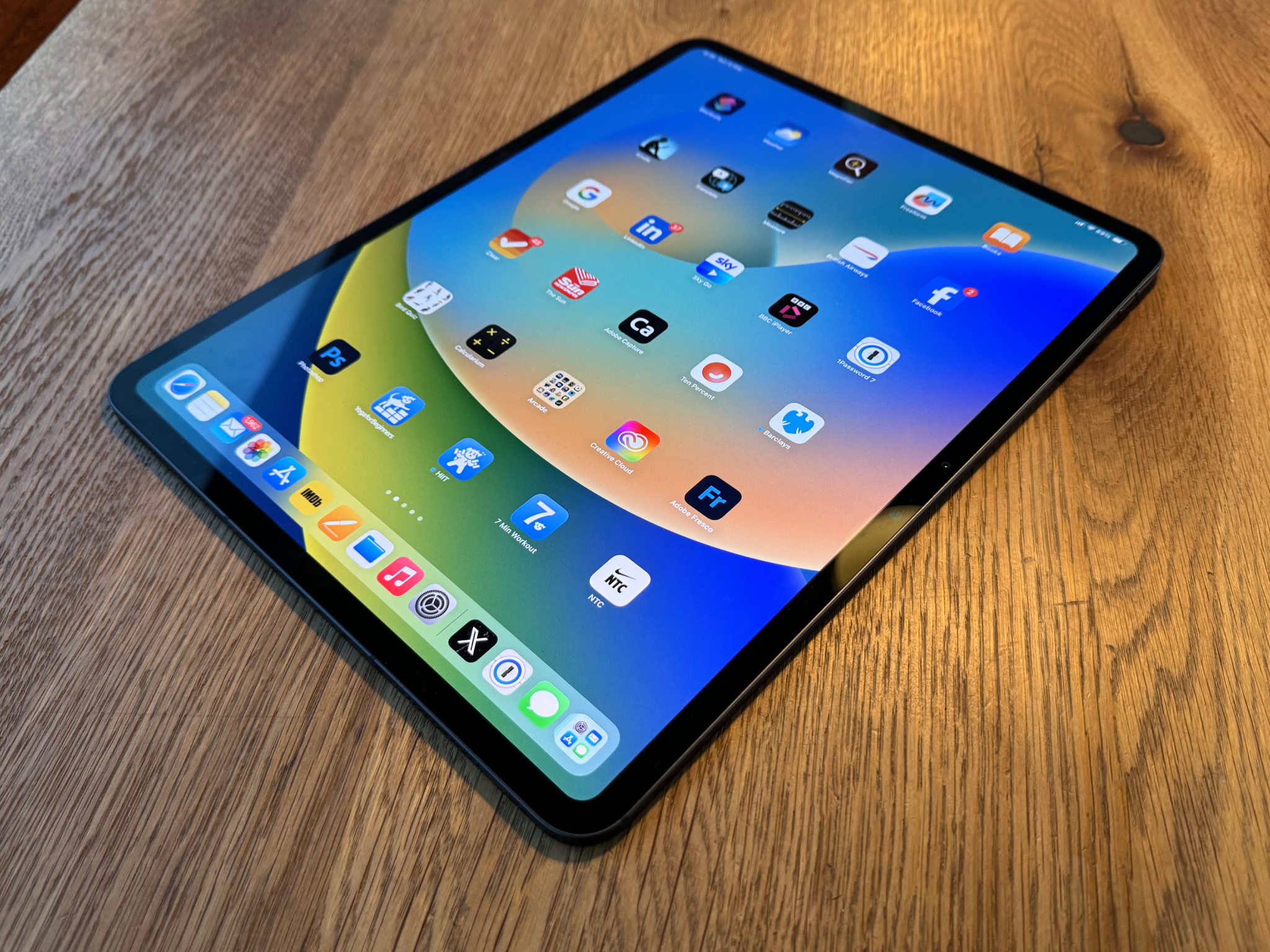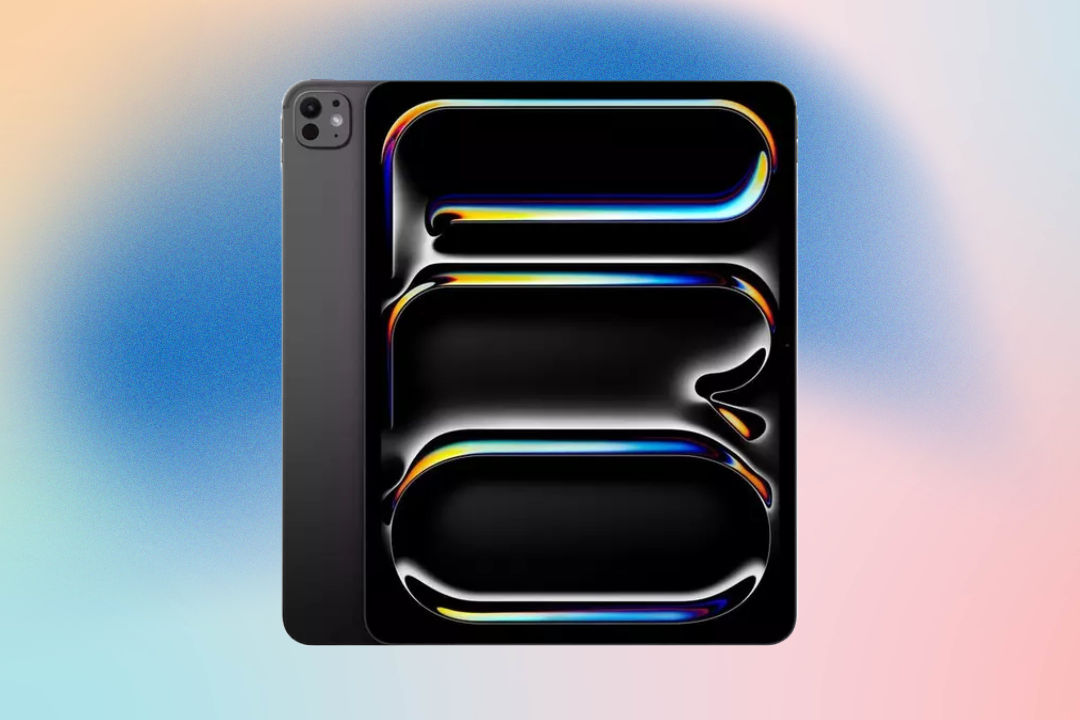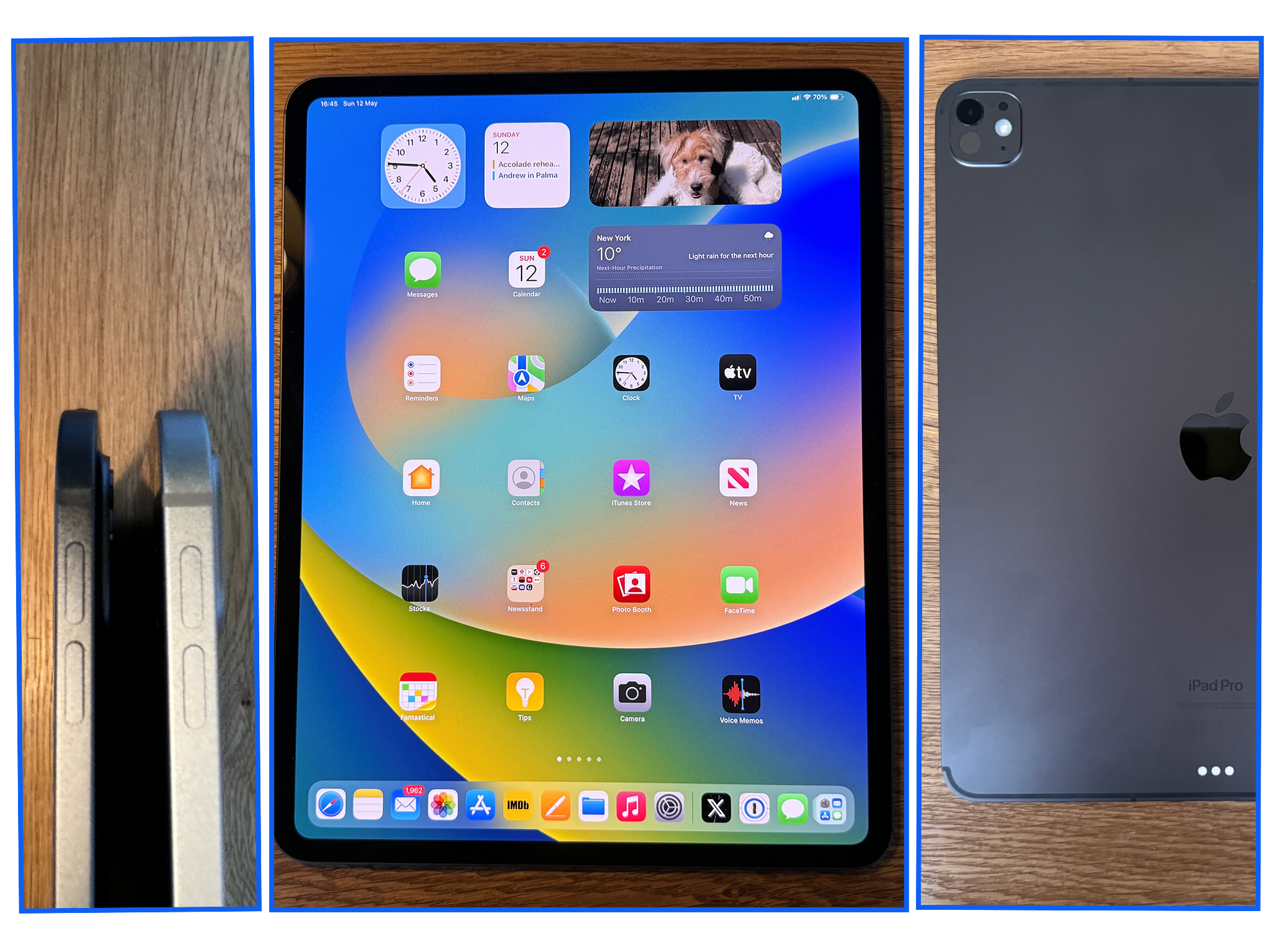Apple iPad Pro 2024

- Rear camera: 12 MP wide
- Front camera: 12MP
- Processor: Apple M4
- Display: 11in/13in
- Resolution: 11in: 2,420 x 1,668px, 264px per inch; 13in: 2,752 x 2,064px, 264px per inch
- Storage: 128GB/256GB/512GB/1TB/2TB
- Battery: Up to 10 hours
- Dimensions: 11in: 249.7mm x 177.5mm x 5.3mm; 13in: 281.6mm x 215.5mm x 5.1mm
- Weight: 11in: 444g; 13in: 579g
- Why we love it
- Stunning design
- Immersive, bright display
- Blazing performance
- Take note
- Higher storage options are pricey
- May be more powerful than some people need
Design
The Apple iPad Pro comes in two sizes, as it did in the previous generation. One with an 11-inch screen and one with 13 inches (slightly up from the previous 12.9-inch). Other than size and price, there are no differences in performance or capabilities between the two. I’m reviewing the 13-inch model but if you prefer something smaller, everything but the size will be the same.
But it’s not the screen size that jumps out at you when you look at the new tablets, it’s how thin they are.
The larger of the two iPad Pro models takes your breath away. At 5.1mm thick, it’s not only much thinner than the last large Pro model, which was 6.4mm thick, it’s actually thinner than any product Apple has made before. Let that sink in. It’s thinner than the tiny iPod nano, though Apple says it’s as tough and durable as before. In the hand, there’s no flex or creaking even if you try to twist it.
Even the smaller iPad Pro is thinner than the last-gen model, slimming down from 5.9mm to 5.3mm. That’s still slimmer than the iPod nano, by the way. In both cases, the iPad Pro looks and feels almost impossibly slim and light.
Some details of the design are mostly unchanged from last time around: a thin bezel surrounds the display, a Face ID camera unlocks the tablet when it recognises your face, and the flat edges house the power and volume buttons. There’s also a magnetic pad where the optional Apple Pencil Pro can snap into place.
But there are other subtle changes. First, the colours have changed slightly. The silver model is similar, but the space grey finish has now been darkened to space black, a deep black matte finish which is quietly glamorous but understated.
Then there’s the Face ID camera, which has moved from the portrait edge of the tablet to the landscape. This is a change which was introduced on the regular iPad in late 2022 and is a significant improvement, for example, for video calls.
Round the back of the iPad Pro, there’s a change to the cameras, which are down by one lens compared to the last generation. The ultrawide camera has now gone, but the wide camera has an updated image signal processor designed to work better in low light, and an improved flash to intelligently create better images, cleverly using AI to remove shadows from documents.
Is the loss of a second camera a big problem? I don’t think so. Perhaps Apple realised that a big flat slab of glass and metal wasn’t ergonomically good as a camera and that an iPhone is much better. As such it has poured its capabilities into different elements, such as augmented reality, which is why there is a LiDAR scanner alongside the camera lens for improved tracking of your surroundings.
There’s no longer a SIM card tray in the models with cellular connectivity. In previous models, the SIM card would have slipped into this, but now this is handled through eSIM rather than physical cards. This has also happened for the iPhone (in the United States) and may expand globally. It’s simple to set up and convenient, though note that not all networks offer pay-as-you-go eSIM options. There’s one other design change, and it’s a big one: the display.
Display
For the first time, Apple has put an OLED screen in an iPad. Previously, the iPad Pro came in two screen versions: regular LCD on the 11-inch iPad Pro and LCD with miniLED backlight on the 12.9-inch display. Now, both sizes of iPad Pro have the same screen technology.
There are many benefits to OLED: higher contrast, deeper black shades, truer colours and so on. But the downside is that OLED isn’t as bright. Apple has solved this, it says, with something called Tandem OLED, a system that uses two OLED displays and combines the light from each of them to deliver much greater brightness. The engineering used to achieve this is complex, but whatever the science behind the new screen, the resulting image is very striking: rich and detailed, with the level of detail that OLED excels with, without sacrificing brightness. Apple states that the brightness levels match the iPad Pro with miniLED: 1,000 nits of full-screen brightness and 1,600 nits of peak brightness for HDR content. And the contrast levels have jumped from 1,000,000:1 to 2,000,000:1.
This is a truly outstanding display, detailed, gorgeous and inviting. There’s one way to make it even better, though. Apple has created a version with a nanotexture finish. This is something it has done before, on the iMac, but it’s a first on the iPad Pro. It’s only available on the most capacious storage options, and it costs an extra £100. It’s designed to scatter ambient light to reduce glare – though the other versions of the iPad all have an anti-reflective coating.
For most people, the standard glass is captivating enough, but it’s a sign of Apple’s commitment to the needs of the creative industry who will snap up the best display with gusto.
Performance
Apple makes its own chips, and for the Mac and later the iPad, the highest performance comes in the M series. The last iPad Air came with the M1 chip, which is really fast. The new iPad Air has been upgraded to the much faster M2.
You might expect the iPad Pro to be powered by the M3, but you’d be wrong. In a surprise move, Apple announced the M4 chip, and it’s this chip that the new Pro models use. Previous M chips have always debuted in Mac products and filtered down to the iPad, but this super-fast processor is found first in the new iPad Pro.
It’s really fast. In everyday tasks like email, web-surfing and photo editing, the M2 of the last iPad Pro was fast enough. But for more advanced video editing or the biggest games with the most advanced graphics, the power of the M4 is undeniable. Some programs, such as Final Cut Pro, really benefit, with time-consuming tasks suddenly much quicker and easier to do.
So how useful is this performance boost for the average user? More than you might think – even if you’re not pushing the iPad Pro to its limits, you’ll still feel the benefits. Most apps won’t tap into the increased horsepower, but the added speed adds headroom in the coming months and years as developers create more demanding apps that really push the silicon.
The headroom unlocked by the M4 is especially welcome given Apple’s recent focus on introducing more AI features, which tend to require huge amounts of on-board processing power, and you can bet there will be plenty of use for that in the near future.












